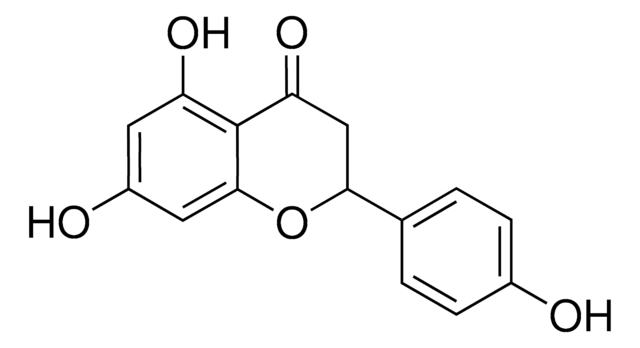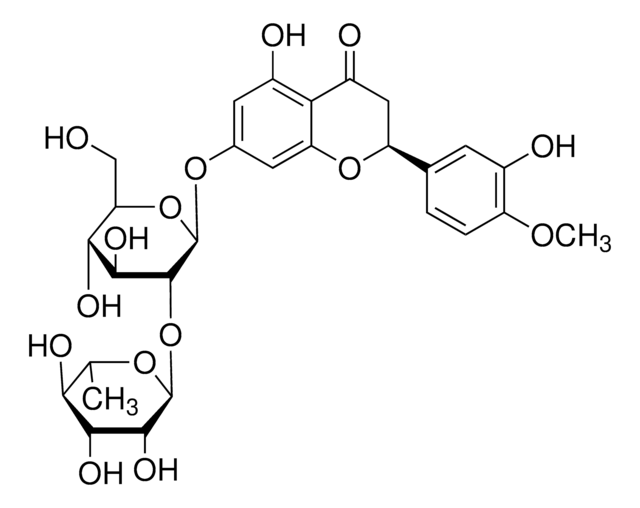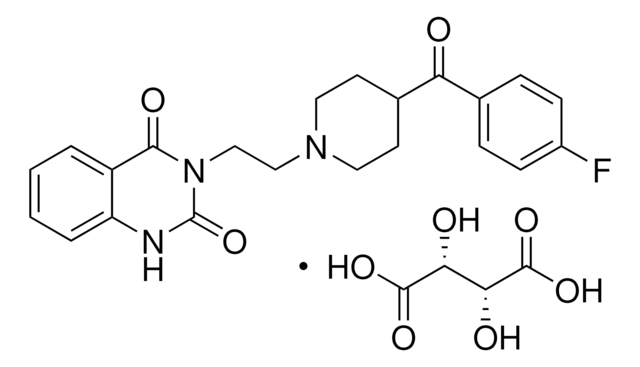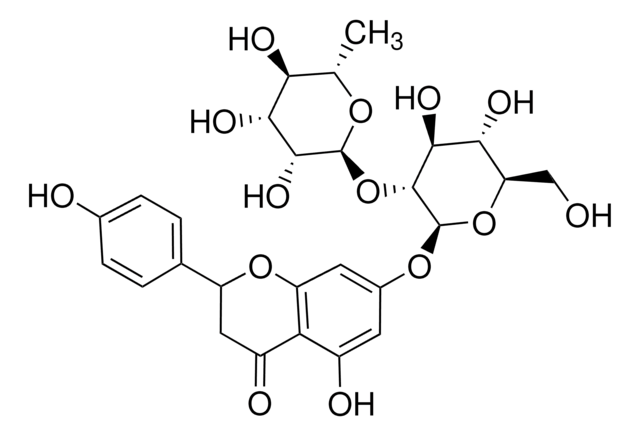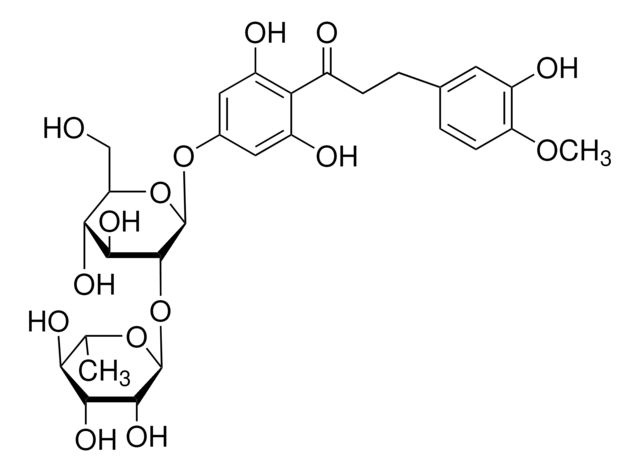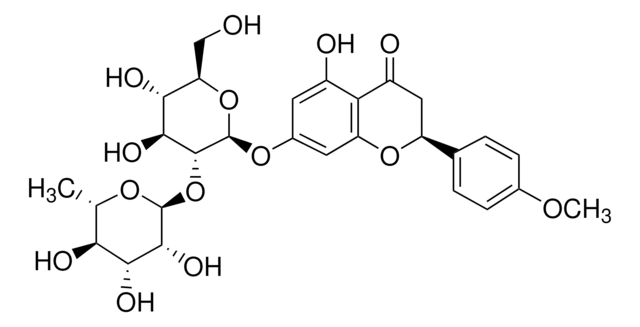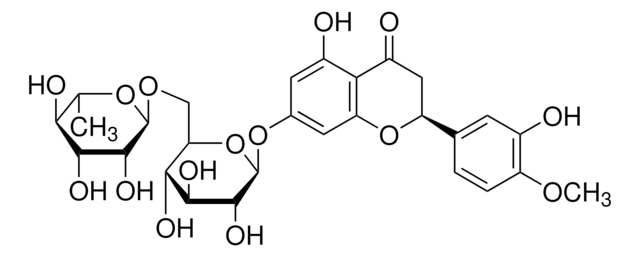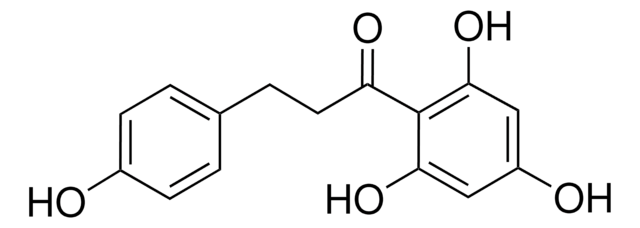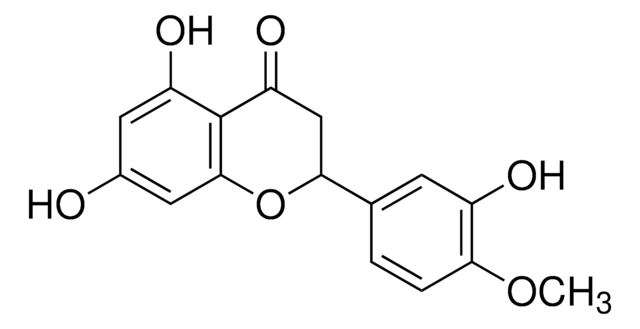N1887
Neohesperidin
≥90% (HPLC)
Synonim(y):
(S)-4′-Methoxy-3′,5,7-trihydroxyflavanone-7-[2-O-(α-L-rhamnopyranosyl)-β-D-glucopyranoside], Hesperetin 7-O-neohesperidoside, NSC 31048
About This Item
Polecane produkty
pochodzenie biologiczne
plant (orange)
Poziom jakości
Próba
≥90% (HPLC)
Postać
powder
kolor
white to light brown
mp
245.3 °C ((473.5 °F ) at 1,011 hPa - OECD Test)
rozpuszczalność
pyridine: 20 mg/mL, clear, faintly yellow to yellow
temp. przechowywania
2-8°C
ciąg SMILES
COc1ccc(cc1O)[C@@H]2CC(=O)c3c(O)cc(O[C@@H]4O[C@H](CO)[C@@H](O)[C@H](O)[C@H]4O[C@@H]5O[C@@H](C)[C@H](O)[C@@H](O)[C@H]5O)cc3O2
InChI
1S/C28H34O15/c1-10-21(33)23(35)25(37)27(39-10)43-26-24(36)22(34)19(9-29)42-28(26)40-12-6-14(31)20-15(32)8-17(41-18(20)7-12)11-3-4-16(38-2)13(30)5-11/h3-7,10,17,19,21-31,33-37H,8-9H2,1-2H3/t10-,17-,19+,21-,22+,23+,24-,25+,26+,27-,28+/m0/s1
Klucz InChI
ARGKVCXINMKCAZ-UZRWAPQLSA-N
Szukasz podobnych produktów? Odwiedź Przewodnik dotyczący porównywania produktów
Powiązane kategorie
Opis ogólny
Zastosowanie
Działania biochem./fizjol.
Inne uwagi
Kod klasy składowania
13 - Non Combustible Solids
Klasa zagrożenia wodnego (WGK)
WGK 1
Temperatura zapłonu (°F)
Not applicable
Temperatura zapłonu (°C)
Not applicable
Środki ochrony indywidualnej
Eyeshields, Gloves, type N95 (US)
Certyfikaty analizy (CoA)
Poszukaj Certyfikaty analizy (CoA), wpisując numer partii/serii produktów. Numery serii i partii można znaleźć na etykiecie produktu po słowach „seria” lub „partia”.
Masz już ten produkt?
Dokumenty związane z niedawno zakupionymi produktami zostały zamieszczone w Bibliotece dokumentów.
Klienci oglądali również te produkty
Nasz zespół naukowców ma doświadczenie we wszystkich obszarach badań, w tym w naukach przyrodniczych, materiałoznawstwie, syntezie chemicznej, chromatografii, analityce i wielu innych dziedzinach.
Skontaktuj się z zespołem ds. pomocy technicznej